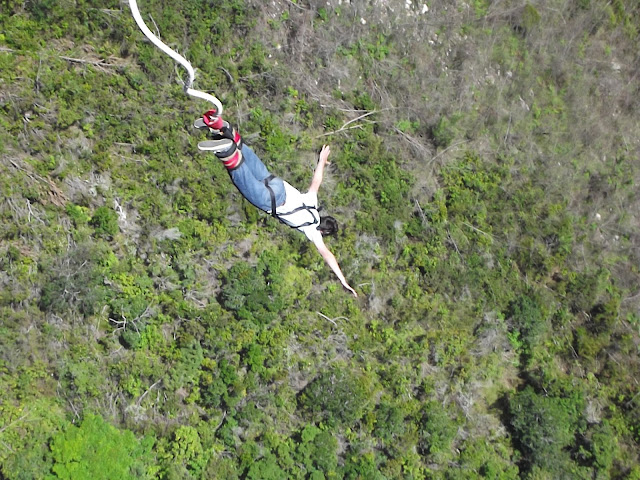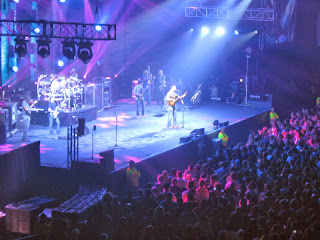I'll start with the fun things I did this week.
Tuesday night I went to the African Dance Theatre - it was a one hour show of
how African dance has evolved. It was pretty cool.
 On Wednesday there was a concert at the nearby stadium to
celebrate the life and legacy of Nelson Mandela. Though we normally have
a meeting with our advisors on Wednesday evenings, they kindly moved the
meeting so we could go. It was pretty cool. We got to experience a lot of
good local music, in addition to a stadium full of Africans singing
"Circle of Life". It was pretty cool, and a good representation
of the overall reaction toward Mandela's death. People are celebrating his life
and legacy and calling on others to live peacefully in his spirit. And
making a profit on Mandela memorabilia.
On Wednesday there was a concert at the nearby stadium to
celebrate the life and legacy of Nelson Mandela. Though we normally have
a meeting with our advisors on Wednesday evenings, they kindly moved the
meeting so we could go. It was pretty cool. We got to experience a lot of
good local music, in addition to a stadium full of Africans singing
"Circle of Life". It was pretty cool, and a good representation
of the overall reaction toward Mandela's death. People are celebrating his life
and legacy and calling on others to live peacefully in his spirit. And
making a profit on Mandela memorabilia.
So an update on work: our project has been twofold:
assessing the WaSH (water sanitation and hygiene) facility built by last year's
group, and make a detailed plan for a new facility without flush toilets, as
that location has no access to a sewer line. Since this dry sanitation
component makes our new facility more complicated, we will not be able to build
or even finish the design process. Thus, our work in this last working
week has been to recruit partners to finish our work for us. We met with
technical representatives from Enviro Loo, who make dry sanitation toilets we
were hoping to use but had some concerns about. They were very helpful
and answered all of our questions, and agreed to help in the installation and
education of the community on how to use and maintain them.
We met with someone from an organization called Touching the
Earth Lightly, which designs innovative environmentally friendly
buildings. They have matched WPI's financial contribution for this
project (which comes from a grant from the General Electric Foundation) and
will be taking over the the design process with the community. They hope
to add a second story function hall, and a "vertical garden," an
innovative way of gardening on the walls of buildings to save space.
We talked to some students from the University of Cape Town
who are interested in doing research in dry sanitation, but have not established
what their role might be.
We even met with someone from the Municipality of
Stellenbosch, where the informal settlement of Langrug is located. They
worked closely with last year's WPI team to create the current WaSH
facility. However due to political tensions in the local government, we
have mostly been working independently of them this year. We still have
friendly contacts in the department, with whom we met and who said that a
partnership with the Municipality for the maintenance and operations of this
new facility might be possible in the future.
With all of these pieces coming together, it was time to
write. We still needed to finish editing our 40 page assessment of the current
facility, which we had put on the back burner as our new plans evolved.
In addition, we now saw a need to write a proposal to our new partners on what
we hope for this new facility, including documentation of the technical work we
has already begun. This proposal would end up being 35 pages longs.
 |
| "View" from Table Mountain |
Our advisors had told us to save this weekend as a working
weekend. We could still do fun things in the local area, but could not
make major plans to go bungee jumping for example. We worked for the
better part of Saturday and Sunday. Saturday night a few of us saw the
new Hobbit movie. Sunday morning I got up early with a friend to climb
Table Mountain. It was a very foggy morning, and not an ideal day to do
it. In fact, we could barely see the mountain as we were climbing it,
which was a little disconcerting. The view from the top was nonexistent in the
fog. But with less than a week in Cape Town, it was worth it. Table
Mountain is a huge tourist attraction, and there is a cable car that brings
visitors to the top if they do not wish to hike it. There is also a cafe
and gift shop at the top, from which we viewed part of the state funeral for
Nelson Mandela. We climbed back down the mountain and were back by 10 to
keep working.









































